Student Blog

Lessons from Smash Mouth: My Time at SSO ⟩
October 4, 2021, by Seth
“The years start coming and they don’t stop coming”
It’s like they, “they” being notorious rock band Smash Mouth in their hit single “Allstar”, always say, “the years start coming and they don’t stop coming.” For example, take my time at the Chan Division. I entered USC’s BS-MA program five years ago and in the blink of an eye, I’m almost at the finish line. If we’re being honest, it’s actually 31 weeks away from the finish line, but really, who’s counting? 31 weeks to go doesn’t just mean graduation, it also means the future (AKA: the time to get my life together by and FAST)! As my next life stage looms in the distance, I did the one thing anyone else in my position would do: I stressed about it for a couple days until the universe sent me a sign (well, an Instagram DM).
“You’ll never know if you don’t go”
As it turned out, a mentor who knew I was looking for my next big break decided to pass along the information for an upcoming event, the Society for the Study of Occupation’s (SSO) “Occupation and Gender” virtual conference. For those of you who don’t know, I was an LGBTQ+ studies minor in undergrad. When I wasn’t doing OT, I was doing gender studies. Even when I’m doing OT now, I’m usually doing gender studies at the same time. With the future looming, I was starting to realize that I wanted to explore the socio-cultural aspects of OT more explicitly in the future and with that being said, this conference was made for me. When I needed it most, it simply appeared in front of me on a silver platter! Talk about serendipitous timing, right? Now that I knew it was out there, it was time to get to work, after all, “you’ll never know if you don’t go!”
“I ain’t the sharpest tool in the shed”
Later that week, I emailed the Chan Student Leadership Awards Committee to make a case for my attendance (including, but not limited to, bringing and sharing the information back to my fellow OTs for OuTreach members) and I secured the funding. From there, I just had to wait two weeks until the conference went live. What that really meant, however, is that I had a whole two weeks to think about how nervous and unprepared I was! This was going to be my first conference, my first foray into the world of OT outside of my five-year ivory tower residency (albeit a conference is basically within that tower’s property) and with each passing day I was worried that I wasn’t going to belong. Remember when I said the conference was made for me? Yeah, you can forget about that! All I could think about was how “I ain’t the sharpest tool in the shed!”
“You’ll never shine if you don’t glow”
Fast forward to the day of the conference and not much had changed except for the fact that I was now very aware that I was just a student amidst the leaders of contemporary occupational science. The conference was laid out so that I could asynchronously review poster sessions (AKA things I could prepare myself for beforehand) throughout the week and then tune in live for synchronous paper presentations and their joint discussion sessions (AKA being thrown in the deep end). I started off breezing through the poster sessions and then tuning in to the theme speaker to build some confidence. From there, I pushed myself out of my comfort zone and joined the conference mixer, got thrown into a breakout room, and became a face others would recognize throughout the conference. Objectively that was a good thing, but subjectively it meant I couldn’t get by turning my camera off and staying on mute. You win some, you lose some. Regardless my day was off!
I scheduled myself for eight sessions that day and halfway through disaster struck. Someone directly asked me if I had any thoughts on the topic at hand. I shook my head, laughed a bit, and typed in the chat, “I’m just a wallflower at the moment!” and the conversation carried on as if nothing had happened. But, spoiler alert, I actually understood what they were talking about and at times even thought before them what to say! It was almost as if the past five years weren’t just for fun. After I finally caught on that I could be a competent conference attendee, I decided it was time for that wallflower to bloom. I missed my opportunity, but I wasn’t going to miss it again. “You’ll never shine if you don’t glow” right, Smash Mouth?
“So much to do, so much to see”
With renewed vigour, I was on a mission to be heard! There was “so much to do, so much to see” and I was no longer content to watch it go by. During the next session, I shared a some insights on incorporating gender theories into occupational therapy curricula. I followed that up by asking four whole questions in a session on the environmental impacts on gender identity (and, I might add, stayed after the session to talk with the authors). The cherry on top of the day was when I gave a suggestion for additional research that the author actually wrote down!
“Hey now, you’re an all-star”
I won’t bore you with the rest of the details, but I will say that I carried that energy with me until the end of the conference. Although I am taking everything I learned from the conference back into the classroom and future practice, the most valuable thing that I took from that weekend was that I belonged in that space. It was the first time I ventured into the world of occupational therapy unsupervised and it showed me that I was ready for whatever is in store for me 31 weeks from now. Although we all live different lives with different experiences, know that you’re also ready for what is to come 31 weeks from now. You are prepared, you belong, and if you ever doubt it just remember, “Hey now, you’re an all-star.”
⋯
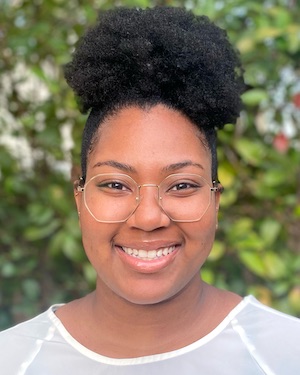
So You Made The Decision . . . Now What? ⟩
September 30, 2021, by Kayla
Admissions Beginnings and Endings
Am I Really Doing This?
I’ve always found a reason to stay pretty close to home; for undergrad I only strayed about 45 minutes down the 210 (including the time added on by traffic) and then I thought I was really stepping out on my own when I moved to LA for grad school at USC. So with that background information, you can imagine the shock that my family and friends felt when I said the words, “I’m moving to Chicago.” I had a hard time wrapping my head around the reality of the decision I had just made as well. Truth be told, I was in denial for a while, but after the denial came acceptance . . . then came stress.
Feeling All The Feels
Stress. It doesn’t discriminate between positive and negative things, it just happens. So while I was excited that it was almost time to actually set off to Chicago, my mind was constantly racing thinking about all of the things that I still needed to plan/organize/do.
Anxiety. It can happen even if we can rationally think through our problems, sometimes that alone just isn’t enough. The OTD program follows a traditional schedule, beginning in late August; I was not set to start the clinical portion of the program until September 20th! And while I knew that the program is designed to be flexible to these very situations, I was worried that I was somehow falling behind. I had to remind myself that this is MY journey and that comparison is nothing but the thief of joy.
During this phase, I really had to believe that everything would come together, be confident that I was prepared to handle the changes coming my way, and more than anything remember the reasons why I decided to complete the OTD.
Strength in Goodbyes
As the time came closer for me to load up a moving truck and drive across the country, I started reflecting on all of the reasons WHY I stayed so close to home for so long. The two most prominent being my family (including my two nephews that I absolutely adore) and the remarkable group of people I get to call my friends. I made sure to be intentional about spending time with my loved ones (and eating as much delicious California food as possible) before I left. The love and support they poured into me made it so clear that no matter where I went, or how far I was, I would not be going through this year alone.

Lunch in Santa Monica with Guarina

A polaroid with my classmates, Kim and Alex
No Turning Back
2,000 miles, 35 hours, 7 states, 3 days, and 2 AMAZING parents that dropped everything to traverse the country with me in a moving van. As we put more miles behind us and got closer to Illinois everything became real and (despite a quick moment of apprehension somewhere in the middle of Oklahoma) I finally felt ready.
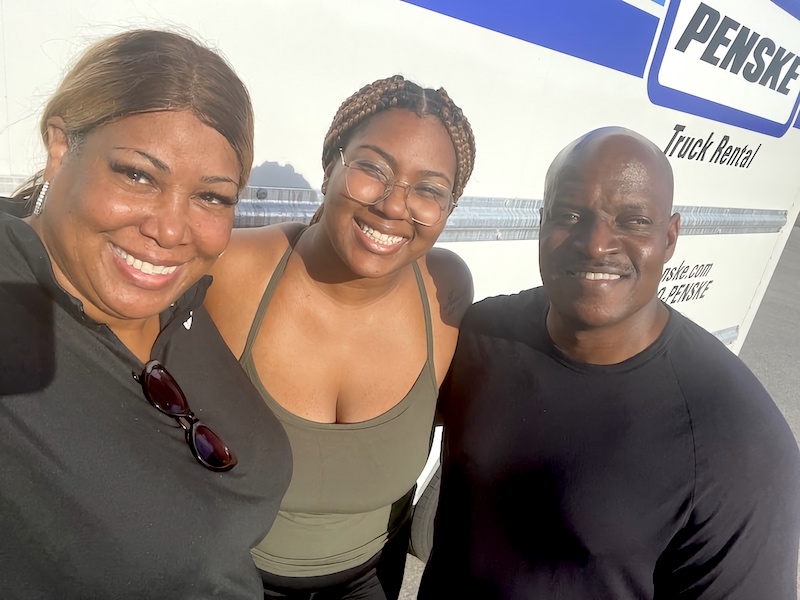
Last day of our road trip!
I wanted to share this with you all because I know that this is the time when you are making some pretty big decisions about your future and it can feel like there are so many unknowns ahead of you. If there is one thing that I have learned thus far in this experience is to not let that stop you from taking a chance on yourself. As deadlines are approaching keep that in mind, because you never know, it might be turn out to be everything you hoped for, good luck!
⋯
Perspectives of a Post-Professional MA to OTD Student: Amy Yeu ⟩
September 29, 2021, by Global Initiatives Team
Classes Externships International
Su-Min (Amy) Yeu, OTD
By Michelle Plevack
Entry-Level Professional Master’s student
In collaboration with Maggie Chen and Prutha Satpute
Global Initiatives OTDs
Editors Alison Chang, Vanessa Elshamy, and Brittany Inouye
Entry-Level Professional Master’s students
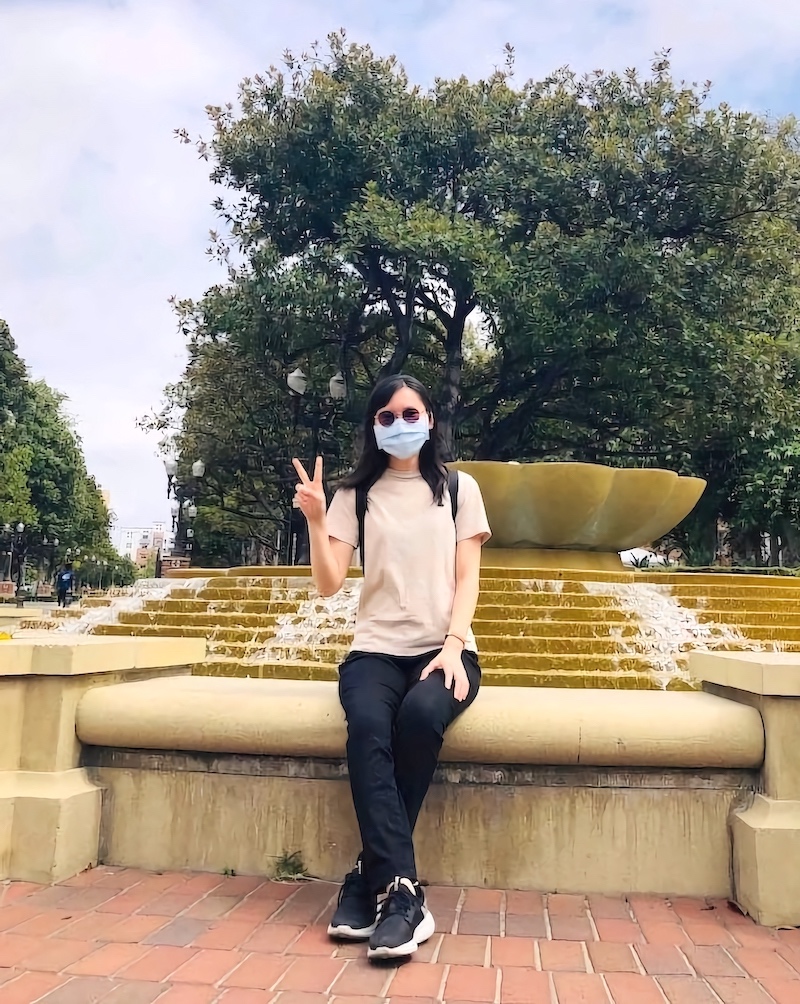
First photo Amy took at USC — OTD, Fall 2021
Global Initiatives OTD Maggie Chen had the opportunity to interview international student, Su-Min (Amy) Yeu. Michelle Plevack wrote this blog with the purpose of sharing Amy’s perspectives of her transition from USC’s Post-Professional Master’s Program to the Post-Professional Doctorate of Occupational Therapy (OTD) Program.
What are some of the factors that influenced your decision to continue your education with the OTD?
Amy: I considered professional, personal, and program aspects. Professionally, I thought about my future career and my goals. As an international student, I thought about what I was interested in but could not learn in my hometown. For example, I know that OT in the United States focuses on health promotion, an area I am interested in. I also thought about the timeline and pathway that I am going to take in the future. For example, when am I going to do the OTD and how long is the program going to be?
Personally, I hope to return to Taiwan. I also thought: if I am not going to do the OTD, then what am I going to do? Am I going to work in the US or am I going back to Taiwan? I also thought about the difference if I did not have the degree: is it only because I want to earn another credential, or is there anything else that is important to me? Another thing I considered was employment, of course. Like many students, I have concerns about paying tuition and looked into residencies that might offer a scholarship or stipend for me. As far as personal goals, it was important for me to travel abroad and to gain new experiences in the US.
Considering programs, I was interested in non-traditional tracks that focus on health and wellness and international relationships. I know at USC they have clinical, research, administration, and pedagogy tracks. I ended up being placed with the Kortschak Center for Learning and Creativity (KCLC — clinical track) at USC which I am very grateful for, and I know at USC, I can choose to have a subspecialty — in research, for example — that could contribute to my career goals.

Commencement: Kaohsiung Medical University; Kaohsiung, Taiwan — Senior, 2018
What goals have you set for yourself during your OTD? Why is the OTD beneficial to your future goals and career?
Amy: I want to network and build relationships within the USC community and improve my clinical skills by utilizing my therapeutic use of self, motivational interviewing, and evidence-based knowledge. With these skills, I can not only provide services appropriately, efficiently, and holistically to all students, but also appropriately refer students to other services. As I know these services are not currently popular in Taiwan, I hope to show the efficacy of the services at KCLC by conveying the unique roles and skills of occupational therapy and academic coaching services in universities. My future goal is to improve the quality of life of university students in Taiwan, particularly as a result of the COVID-19 pandemic, by implementing and developing novel ideas into on campus services. I believe having a doctorate level of education at international conferences will allow me to effectively advocate for essential services and pioneer the roles of OTs working in universities.
How has the transition from Post-Professional MA to OTD been?
Amy: This transition looks different depending on what track you are taking. For my clinical track, I spend most of my time in my residency at 20 or 40 hours a week. Compared to being an Post-Professional MA student, your role changes as an OTD student, as you are ‘in the driver’s seat’ where you need to be self-directed, proactive, and create your own structure to support your goals. However, because I am more settled into my role after the MA program, I feel less anxious and confused, and even excited about my coursework. Consequently, compared to being an MA student, there are fewer social opportunities with peers due to the nature of the coursework for the OTD program.
What has been the best and hardest part of the OTD so far?
Amy: The best part is my residency — I feel like I am seeing the endless possibilities of occupational therapy. There have been so many opportunities during the process of integrating my knowledge, experiences, and passions in a way where I am ‘learning by doing’. I get to wake up excitedly, not only because of schoolwork, but also because I am pursuing my dreams while collaborating with people who share the same goals, values, and beliefs. Some difficult aspects of the OTD for me as an international student are the language and cultural barriers, particularly while sharing thoughts. I am still figuring out how to provide services and express my perspectives with the KCLC team in an effective and efficient manner. Due to the cultural differences between myself, clients, and peers, I am also not always familiar with a place or experience they might reference to. Finally, learning to be more flexible due to the uncertainties of the pandemic, such as adjusting to hybrid services, has been a challenging transition as well.
How have you been balancing leisure and personal time with OTD responsibilities?
Amy: I try to be patient and kind to myself. Luckily, I work in a residency that promotes the importance of work-life balance and recommends us to not bring work home. I also try to focus on self-care activities, setting up short breaks, making time for myself, journaling, having snacks, listening to music, catching up with family, and socializing with friends on weekends.
What advice would you give to students about the OTD?
Amy: For those indecisive about the OTD, I would recommend connecting with professors, residents, and other peers who are interested in discussing the OTD. In my experience as a MA student, it can be hard to decide one month into the program if the OTD is right for you. And even though I am very satisfied with my residency, I regret not applying to even more sites! Remember that post-graduation, you do not need to stick to whatever you do for your OTD. If you are planning on doing the OTD, consider what you want to get out of this program. You won’t regret it! Keep dreaming big! Jot down your thoughts, journal, and think deeper. Remember there are no restrictions with what you can do with an OT background. Consider being open to roles or positions not necessarily called OT if they relate to your passions.

Amy’s residency: USC Kortschak Center for Learning and Creativity; Los Angeles — OTD, 2021
⋯
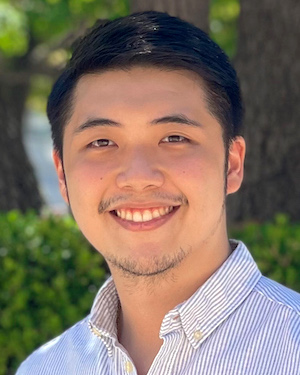
My Class is a Nexus Point ⟩
September 29, 2021, by Marvyn
Diversity International Living in LA
A nexus is a connection of multiple links into a common point or place. In the Post-Professional Master’s program, it’s just that.
If you read about my previous blog post (OT was not my first choice . . . but I have no regrets), I mentioned that time and destiny have their unique way of bringing people together. The program I’m in is no exception to this. For the most part, it’s almost serendipitous. Can you imagine that more than 30 unique individuals, having each their own personal experiences and life stories across the globe, flew into Los Angeles to study OT? On top of that, we’re still in the middle of a global pandemic!! It sounds so crazy and thrilling to me that I have classmates from India, Taiwan, Hong Kong, South Korea, Singapore, Colombia, the Middle East, and of course my home country the Philippines. Being at class in person, it’s essentially a melting pot of unique stories and personalities: flavors from all around the world! It still baffles me that despite all the circumstances we were all dealing with individually, life just situates us to be together in a class to learn and grow from each other.
You see, experiencing LA is one amazing thing. But can you imagine exploring it with a class that’s as diverse as this? Check out this hike we did at the Eaton Canyon we did on our second week of class! Some say the trail is pretty basic, but it’s much less about the hike but more about the company you’re with. And if you’re hiking with this bunch, you will always run out of breath from having endless, great conversations (oh, and from hiking too of course).
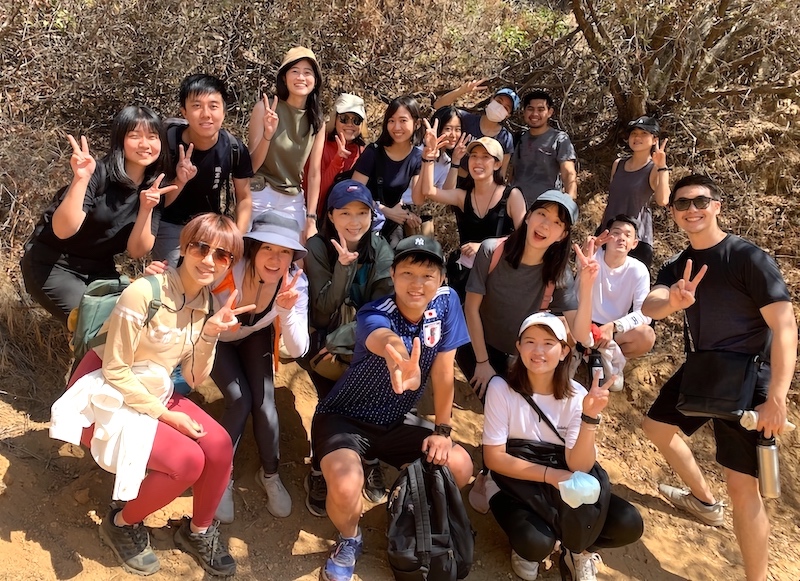
The PP-MA class on our first hiking trip in Eaton Canyon! Photo credits to Yu-Hsuan (Florence) Yang.
On top of that, Dr. Danny Park along with the Global Initiatives team has been very hands-on in support of International Students at Chan, like us in our class. We had events like social mixers and support groups to emphasize togetherness in a culturally diverse environment. A chance to meet and learn from somebody else’s stories and experiences are really irreplaceable, and they are doing an amazing job at that. Fun fact: Did you know that Mooncakes symbolize togetherness and prosperity? Look at some of my classmates celebrating the Mid-Autumn (Mooncake) Festival at the CHP Patio!

One of the many events hosted by Global Initiatives: Mid-Autumn Mooncake Festival! Photo credits to Joshua Digao.
In my classes so far, I have learned the importance of togetherness and community as a crucial part of a person’s optimal occupational performance. My class is the epitome of that. I thought that coming into a class full of foreign students would isolate me, but I was wrong. It is in our different backgrounds and experience that actually makes us even more together! I found an even bigger, cohesive community that is PP-MA. A home outside of home, as you may say.
So to my classmates at PP-MA, you’re all awesome. I am so honored and thrilled to be part of this class as if I haven’t made that clear in this blog post. We all come from different parts of the world, but USC Chan was the nexus point that linked us all together. How cool is that?? I am looking forward to learning more from each of you and to taking even more unforgettable adventures and experiences together this school year. Fight On!
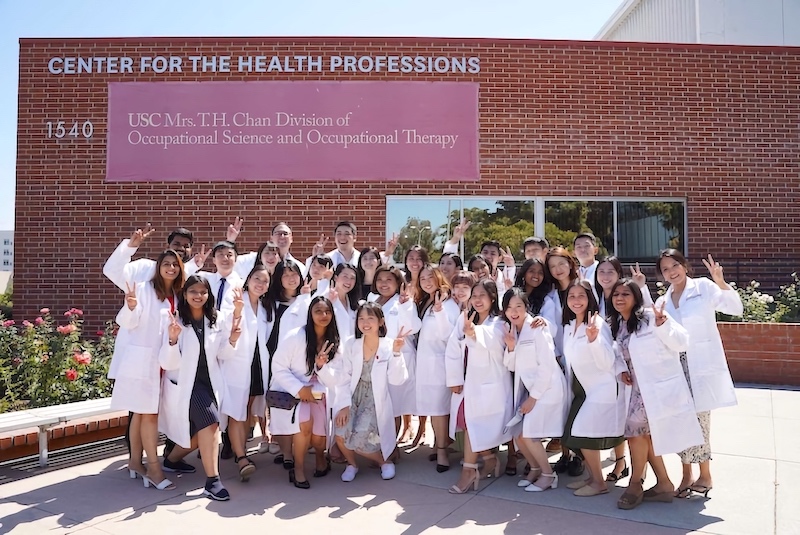
Our White Coat ceremony! Photo credits to Godfrey Lok.
⋯
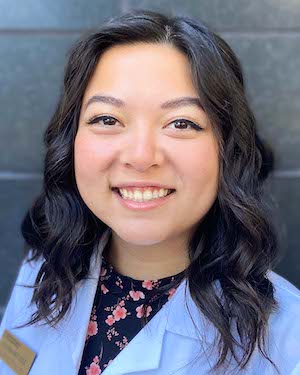
Hacking Houses into Homes ⟩
September 22, 2021, by Alyssa
Housing and Transportation Life Hacks Living in LA
Like a lot of people, I’ve spent most of my time over the past year and a half at home. In a series of events (some fortunate, others not so much), “home” for me has looked like a USC dorm, my childhood bedroom, and several short term apartments. Since March 2020, my living situation has been like a game of ping pong: LA → New Jersey (1 month) → Wisconsin (1 month) → New Jersey (2 months) → Connecticut (4 months) → LA (4 months) → Illinois (3 months) → LA (present).
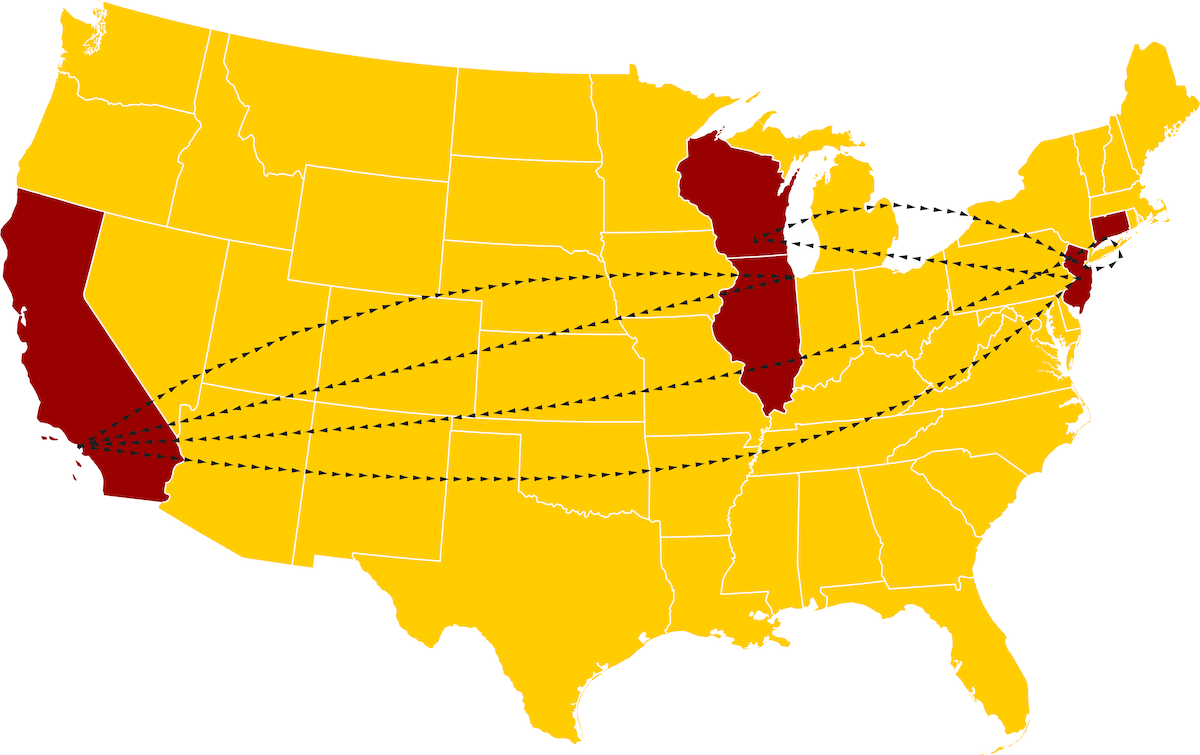
1.5 years of moving around
On top of hopping between states, I was constantly changing the spaces themselves. I can get obsessive over tetris-ing my things into a new space as logically as possible. I draw out floor plans and make models on the Sims. Then, I rearrange my house when I’m stressed (it is a hazard of living with me, any roommate of mine can attest). But what all of this moving, planning, and rearranging has taught me is that there’s no right or wrong answer for a living space — the best space is whatever works for the people living in it.
We’ve learned repeatedly in class that an environment that matches a person’s needs can support their ability to participate in occupations. If you’re considering changing your current setup, moving to LA for grad school, or trying out-of-area fieldwork in a new city — let’s talk tips for making your living environment into a home.
Locations for Leisure
Especially if you are working from home, it can be easy to forget that home is also a place for leisure. Think about how you can make space for leisure activities you like. This could be leaving floor space for a yoga mat, setting up a craft corner, or establishing a comfy space to read. For me, this means having a dedicated table to do puzzles.
Match Your Mess
Nobody’s perfect and sometimes our habits/routines are messy. Instead of shaming yourself for it, consider how your environment can support you. Here are 2 examples:
- If I don’t see something, it isn’t there. I keep my clothes easily visible stacked on bookshelves instead of hidden in drawers. In my fridge, leftovers are on the top shelf, the condiments are in the vegetable drawer, and all vegetables are in the door (this one has really saved me from wasting food).
- Part of my daily routine is trying on no less than 4 outfits before I pick one and then I either run out of time or, honestly, don’t prioritize putting them back. This used to result in a disaster zone in my bedroom and confusion between what clothes were dirty vs clean. My solution now is to have a separate basket for clothes-to-put-back-later that I can reorganize when I have time.
While these might make no sense to you, my point is that there are no rules. Match your home to your habits/routines.
Furniture is Fluid
I’ve gotten almost all of my furniture second-hand and a lot of it is not used for its intended purpose. I’ve used an IKEA dining table as a desk. We used to keep pots/pans in the TV stand. My current fruit shelf was formerly my plant stand and is actually just a bathroom rack I found on the curb. Especially if you’re moving around and feeling like arranging furniture is like fitting a circle block into a triangle hole: everything is multi-purpose if you believe it is.
DIY Decor
Filling your space with decorations that make you feel good can seem expensive. Channel your creative energy and consider making some DIY Decor (throwback to Foundations: Creativity, Craft and Activity Analysis). It doesn’t have to be fancy - here’s some of what I’ve made:

Embroidered/painted moon grid + popsicle stick shelves. All materials are from Amazon or the dollar store.
Writing this felt a little like skipping ahead. Actually finding housing, furniture, roommates, etc. is a whole other ball game — but I’ll save that for another blog post. 😊
⋯





